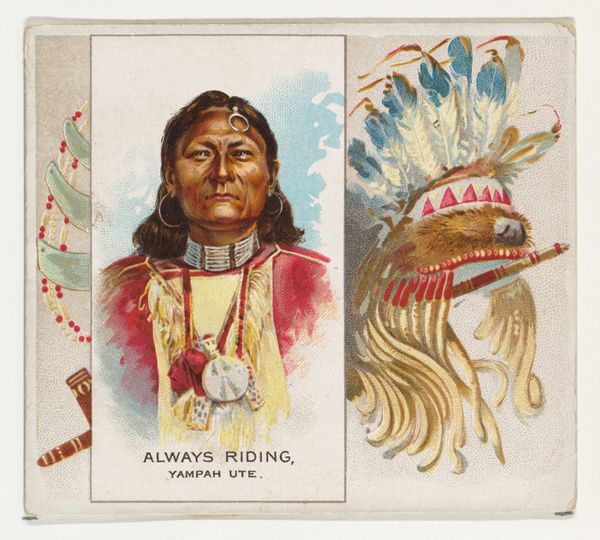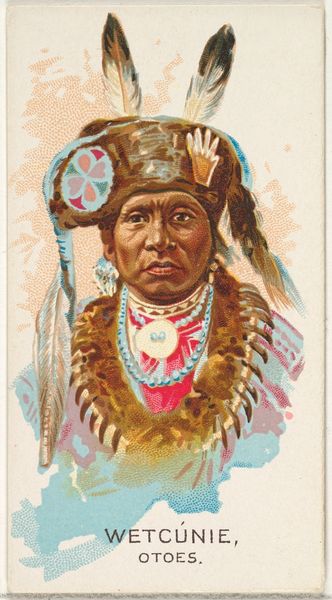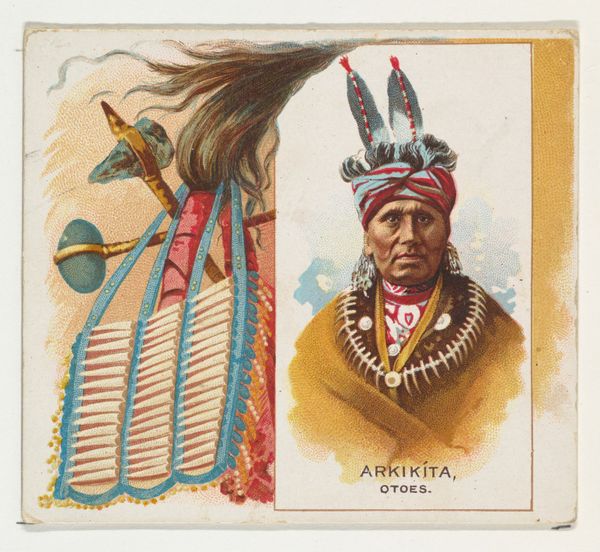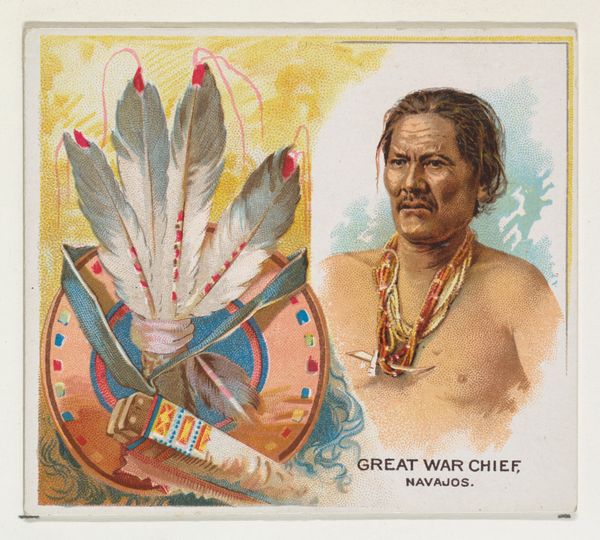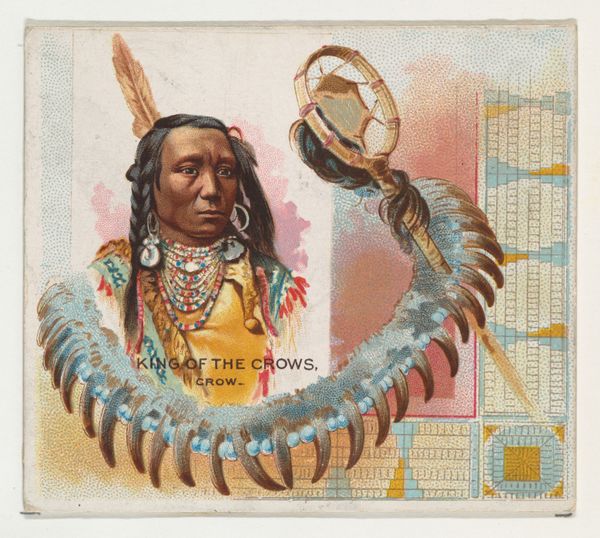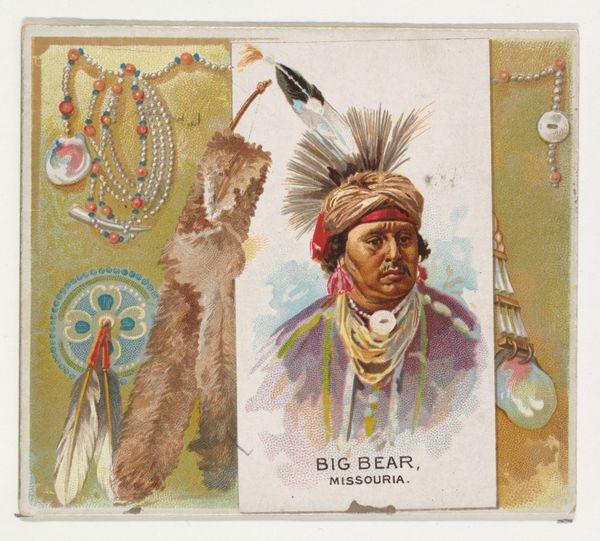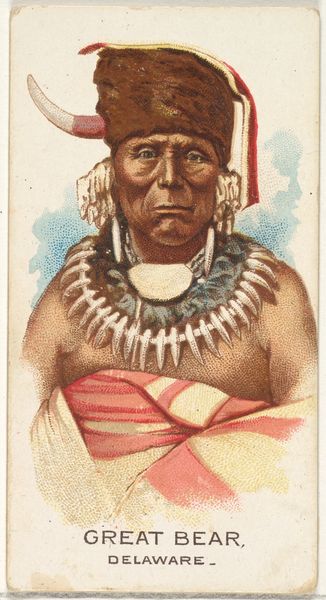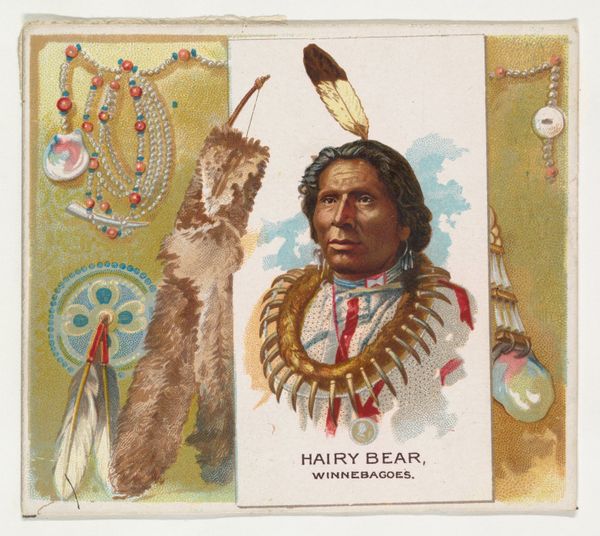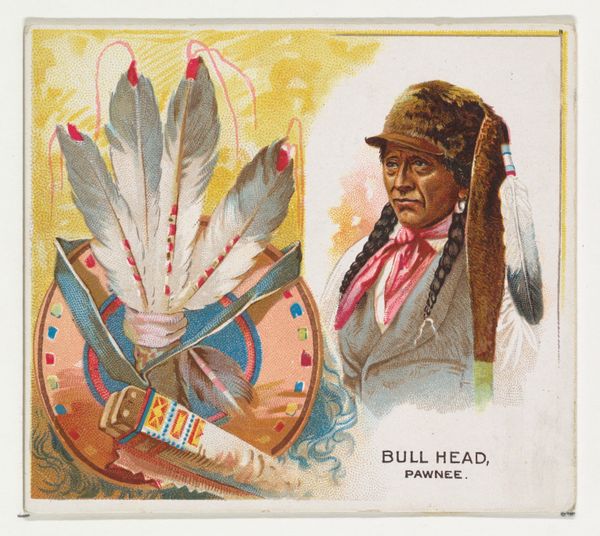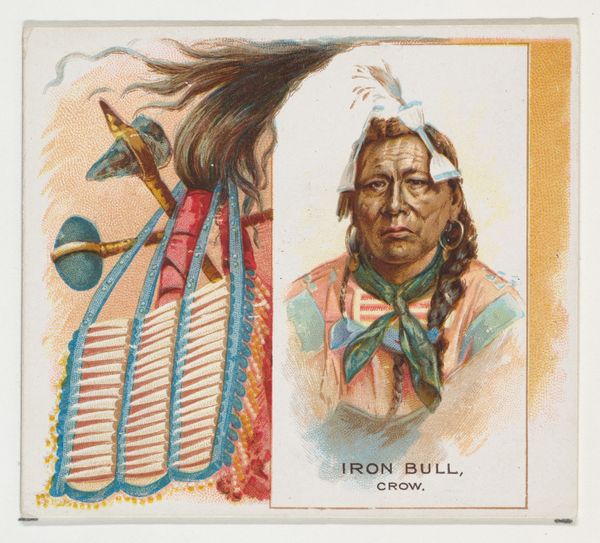
Great Bear, Delaware, from the American Indian Chiefs series (N36) for Allen & Ginter Cigarettes 1888
0:00
0:00
Dimensions: Sheet: 2 7/8 x 3 1/4 in. (7.3 x 8.3 cm)
Copyright: Public Domain
Editor: This chromolithograph from 1888, entitled "Great Bear, Delaware, from the American Indian Chiefs series," was created by Allen & Ginter Cigarettes. It's a vibrant portrait, made with colored pencils and print techniques, that almost feels like Ukiyo-e meets the Wild West. What are your initial thoughts on the way this was produced and what message does it send? Curator: I’m struck by the contrast between the commercial function of this image – an advertisement – and its depiction of Great Bear. The use of chromolithography, a mass-production technique, meant that thousands of these cards could be churned out quickly and cheaply to promote cigarettes. What does it say about our culture when a person is reduced to a caricature, printed onto a flimsy piece of cardboard, only to sell an addictive product? Editor: That’s a great point. The industrial process seems almost disrespectful, especially given the subject matter. Were the materials easily accessible? Curator: The availability and low cost of paper and printing technology in the late 19th century allowed companies like Allen & Ginter to flood the market with these kinds of collectibles. Consider also the context: westward expansion, the dispossession of Indigenous lands, and the commodification of cultural identities. The material reality of this card becomes inextricably linked to the historical injustices it silently propagates. Editor: So, it’s less about the artistic skill and more about how mass production intersects with colonialism. Curator: Precisely. The real focus here should be on what it meant to mechanically reproduce and disseminate this image. We should analyze how this process served specific economic and social agendas, which is arguably much more relevant to how we view this "artwork". Editor: This has certainly changed how I see this portrait! Thanks for pointing out the importance of production techniques and their context; it adds a disturbing layer of meaning that I hadn't fully considered. Curator: Glad I could offer a different perspective, hopefully opening you up to explore how power structures influence and permeate what art is and can be.
Comments
No comments
Be the first to comment and join the conversation on the ultimate creative platform.

